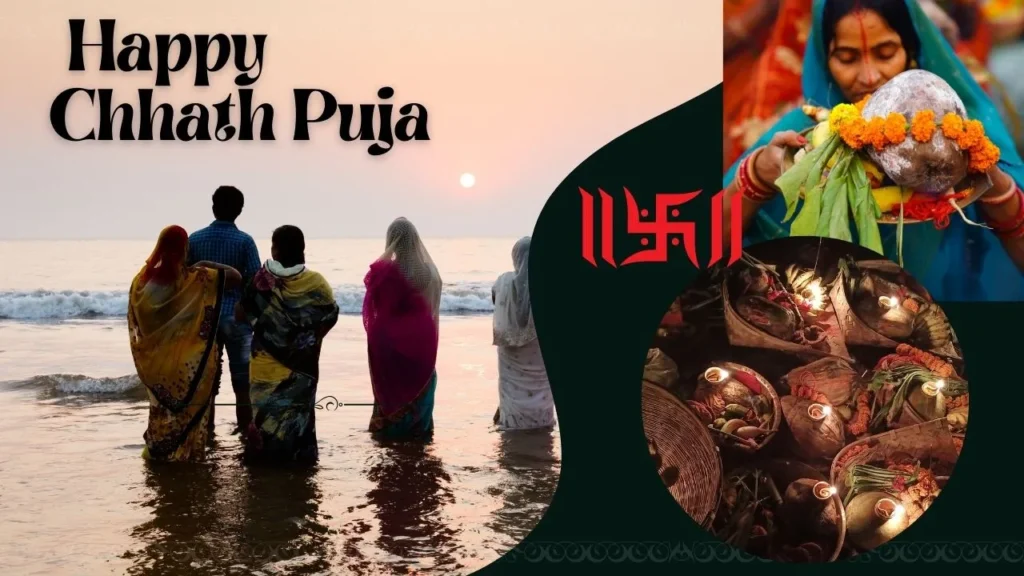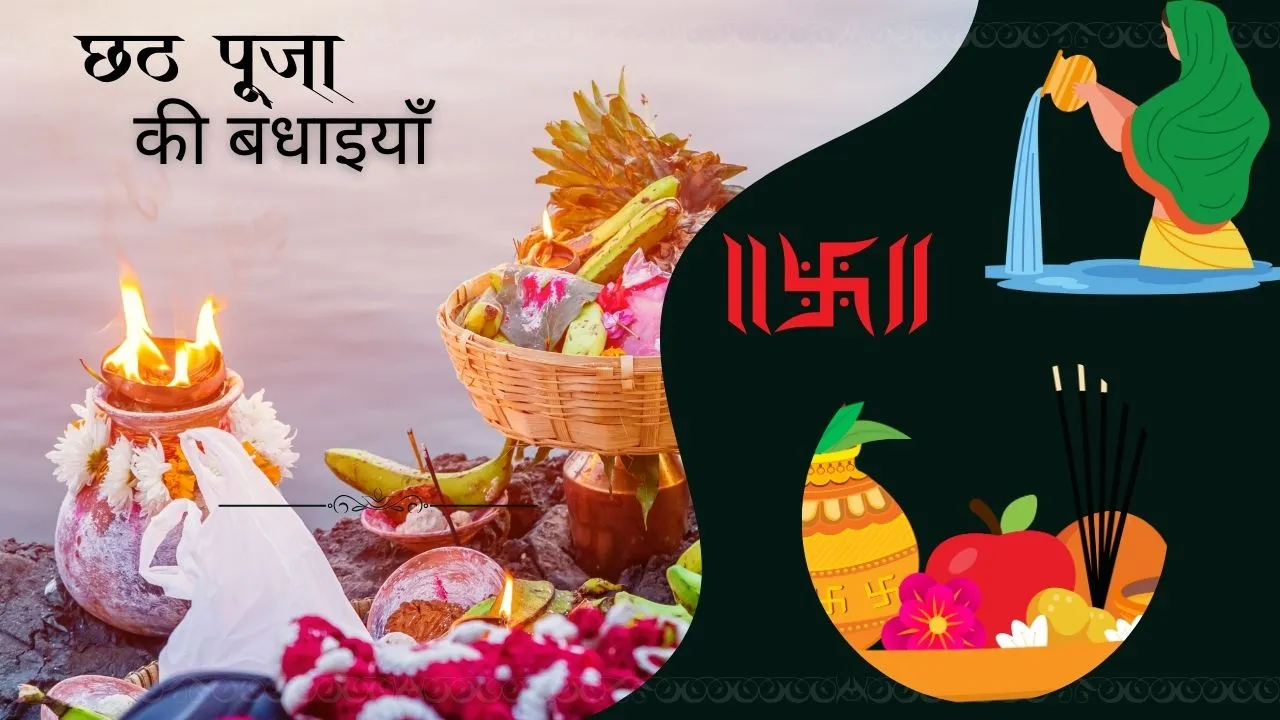Table of Contents
ToggleChhath Puja 2024 Will Be Celebrated From 05th Nov 2024
Discover the essence of Chhath Puja, a four-day festival celebrated in Bihar, India. Learn about its rituals, significance, and cultural importance in this detailed guide. Festive season which start with Diwali, ends with the completion of 4 day Chhath festival.
About Chhath Puja
Chhath Puja, celebrated primarily in the Indian state of Bihar, as well as parts of Uttar Pradesh, Jharkhand, and Nepal, is a vibrant festival dedicated to the worship of the Sun God, Surya, and his consort, Usha. Known for its rigorous rituals and unwavering devotion, Chhath Puja is a unique festival where devotees fast, pray, and offer gratitude to the Sun for bestowing life and energy on Earth. This festival stands out for its simplicity, purity, and communal spirit, drawing families and communities together in an awe-inspiring display of faith and tradition.
Origin and Historical Significance of Chhath Puja
Chhath Puja has ancient roots, with references in texts and epics like the Mahabharata. Some believe that Draupadi and the Pandavas performed this ritual to secure blessings and win back their lost kingdom. Others trace the origins of Chhath Puja to the Vedic period, where the ritual of sun worship was prevalent among Aryan civilizations. The festival also has links to the mythological story of Surya, the Sun God, and his sister Chhathi Maiya, to whom devotees pray for the well-being and prosperity of their families.
The Spiritual Significance of Sun Worship
In Hindu culture, the Sun is revered as a life-giver and a powerful deity who dispels darkness and nurtures all forms of life. Chhath Puja is performed to express gratitude to Surya for his sustaining energy and to seek his blessings for health, wealth, and happiness. The rituals symbolize the eternal bond between humans and nature, embodying a profound spiritual reverence for the Earth and its celestial forces.

The Four Days of Chhath Puja: Rituals and Traditions
Each day of Chhath Puja has a unique set of rituals, culminating in an unforgettable display of faith at riverbanks and water bodies. Here’s a breakdown of each day’s significance and practices:
Day 1: Nahay Khay – The Preparation Day
The first day marks the beginning of the purification process. Devotees bathe in holy rivers, especially the Ganga, to cleanse their body and soul. Afterward, they prepare traditional vegetarian meals, typically rice, dal, and pumpkin, made without garlic or onion. This meal is offered to the family to signify the start of the fasting ritual.
Day 2: Lohanda or Kharna – Fasting Begins
The second day is marked by a day-long fast that ends after sunset. Devotees consume a simple meal, usually consisting of kheer (sweet rice pudding), roti, and fruits, after offering prayers to the Sun. This meal is free from salt and other spices, symbolizing purity and simplicity. After this meal, the vratins (those observing the fast) begin a 36-hour fast without food or water.
Day 3: Sandhya Arghya – Offering to the Setting Sun
This day is considered the most significant part of Chhath Puja. Families and communities gather along riverbanks in the evening, where the devotees stand in waist-deep water and offer arghya (a ritual offering) to the setting sun. The offerings include thekua (a traditional wheat-based sweet), coconut, fruits, and seasonal vegetables arranged in bamboo trays known as soop. The ambiance is magical as devotees, holding lighted diyas, offer prayers, creating a mesmerizing scene by the riverside.
Day 4: Usha Arghya – Prayers to the Rising Sun
On the final day, devotees again gather at the riverbank before dawn to offer prayers to the rising sun. The festival concludes with Usha Arghya, symbolizing a new beginning and the fulfillment of devotees’ prayers. Once the rituals are complete, devotees break their fast with prasad and share it with family and friends.
Essential Offerings of Chhath Puja: Significance and Symbolism
The offerings made during Chhath Puja are not merely ritualistic but carry symbolic meanings:
Thekua: This traditional, wheat-based sweet is made in large quantities and is central to the offering. It represents prosperity and simplicity.
Soop: The bamboo tray used to hold all offerings signifies sustainability and a connection to nature.
Fruits and Vegetables: Seasonal fruits and vegetables, particularly sugarcane, banana, and coconut, are essential for Chhath Puja. Each item represents a natural element, honoring the Earth’s bounty.
The Unique Aspects of Chhath Puja
Unlike many other Hindu festivals, Chhath Puja doesn’t involve idol worship. Instead, devotees worship natural elements—the Sun and water—as symbols of divine power. The festival is marked by stringent discipline, rigorous fasting, and abstinence, making it one of the most challenging yet fulfilling practices. The communal nature of the festival fosters a sense of unity as families and communities come together, reflecting mutual support and shared faith.
Health and Environmental Benefits of Chhath Puja
Beyond its religious significance, Chhath Puja promotes several health and environmental benefits:
Fasting Benefits: The fasting ritual cleanses the body, supports mental resilience, and cultivates self-discipline.
Environmentally Friendly Practices: The use of biodegradable items like bamboo trays, clay pots, and natural offerings aligns with environmentally friendly practices.
River and Water Conservation: Since rivers and ponds are central to Chhath Puja, the festival reminds people of the importance of conserving and keeping water bodies clean.
Chhath Puja in Modern Times
As people from Bihar and surrounding states migrate across India and the world, the observance of Chhath Puja has spread far beyond its original geography. Today, it’s celebrated in cities like Delhi, Mumbai, Lucknow and Kolkata, as well as internationally among the Indian diaspora. While riverbanks remain the ideal setting, artificial ponds and water tanks are often constructed in urban areas to accommodate devotees, making the festival accessible to more people.
Conclusion
Chhath Puja is more than a festival; it’s a celebration of life, nature, and the divine forces that sustain us. Through its rituals, Chhath Puja conveys timeless values of gratitude, purity, and respect for nature. Rooted in ancient tradition yet evolving with modern times, this festival continues to hold a special place in the hearts of millions.
Whether you observe it firsthand or witness the reverent devotion of those who do, Chhath Puja is a reminder of the enduring connection between humanity and the natural world—a bond that remains as vital today as it was centuries ago.
